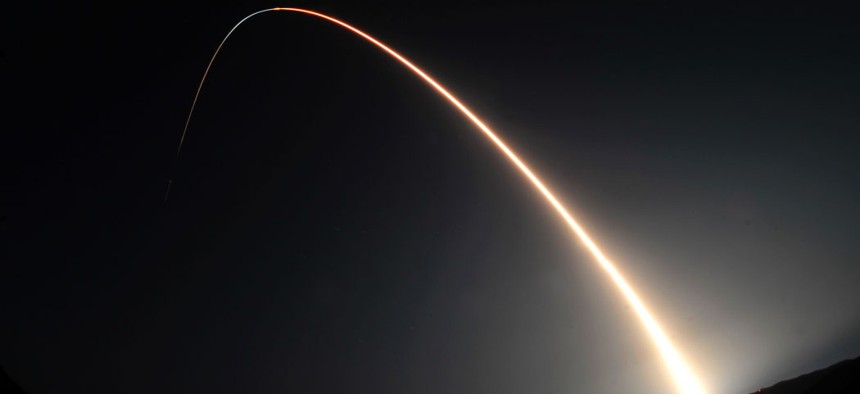Missile-warning sensor advances despite launch uncertainties
The developer of a platform to carry an Air Force missile defense sensor reported progress, but it's unclear when the test bed will get off the ground.
Millennium Space Systems, builder of a space platform intended to carry sensors that could be used to detect tactical missile threats in near-real time, has begun integrating the platform with an Air Force sensor test bed.
The company predicted this week the Air Force’s Wide Field of View (WFOV) spacecraft bus could be fully integrated and "checked out" by this summer. Completion of that step would clear the way for sensor integration. However, launch of the test bed has been delayed by the Air Force for at least two years due to budget uncertainty and technical challenges.
The slimmed down spacecraft based on the company's Aquila M8 platform would carry an "overhead persistent infrared" staring sensor into a near-geosynchronous orbit. The sensor is being developed under a separate contract. The missile-warning sensor is intended to maintain continuous surveillance of a small geographic area and deliver near-immediate warnings of missile launches.
The test bed is designed to augment the Air Force's current Space Based Infrared System (SBIR) and the aging Defense Support Program used for strategic and theater missile warning.
Millennium said the WFOV bus integration phase follows hardware, software and interface verification. The company specializes in flexible satellite platforms that can be customized for specific missions. L-3 Communications won a $13 million contract in June 2014 to develop a 6-degree field-of-view sensor to detect tactical missile threats.
The WFOV test bed is sponsored by the Air Force's Space and Missile Systems Center and is managed by NASA's Ames Research Center. Air Force Lt. Col. Michelle Villavaso, program manager for the WFOV Test Bed contractor team, said the test bed would boost current missile warning efforts as the service considers alternative approaches to missile warning that would augment current SBIR capabilities.
Despite progress on the spacecraft bus integration, it remains unclear when the WFOV test bed would get off the ground. The Air Force initially planned to launch the sensor payload later this year or early next year. According to a January request for information, program officials said the launch timeframe has slipped to 2018 at the earliest.




